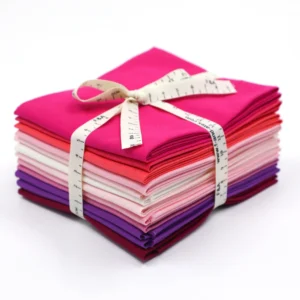
How to tell if fabric is 100 cotton? Identifying whether a fabric is 100% cotton is crucial for many reasons, including comfort, durability, and suitability for sensitive skin.
Cotton is a natural fiber known for its softness, breathability, and hypoallergenic properties, making it a popular choice for clothing, bedding, and other textiles. This article explores various methods to determine if a fabric is made entirely of cotton, ensuring you can make informed decisions when purchasing or using cotton products.
What Is 100% Cotton Fabric?
Characteristics of 100% Cotton Fabric
How to tell if fabric is 100 cotton, First, understand the characteristics of cotton fabric so that you can easily tell whether it meets the corresponding characteristics.
Softness
100% cotton fabric is renowned for its soft and comfortable texture, making it a favorite for clothing and bedding.
Breathability
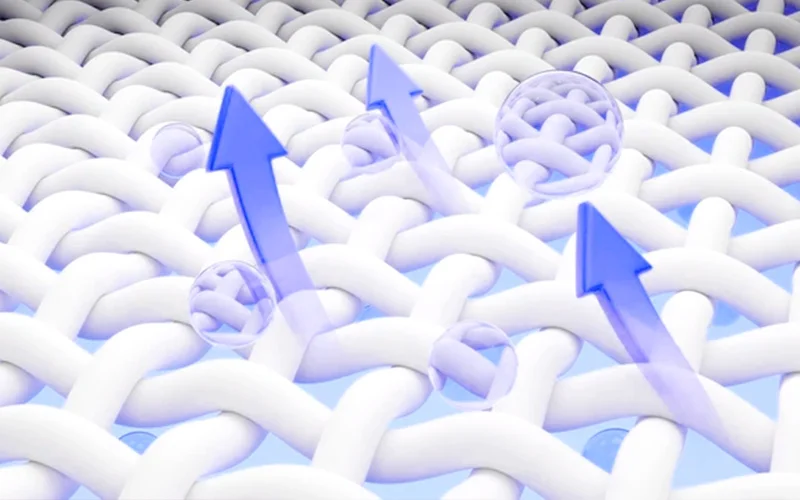
Cotton allows air to circulate freely, keeping you cool and comfortable, especially in warm weather.
Absorbency
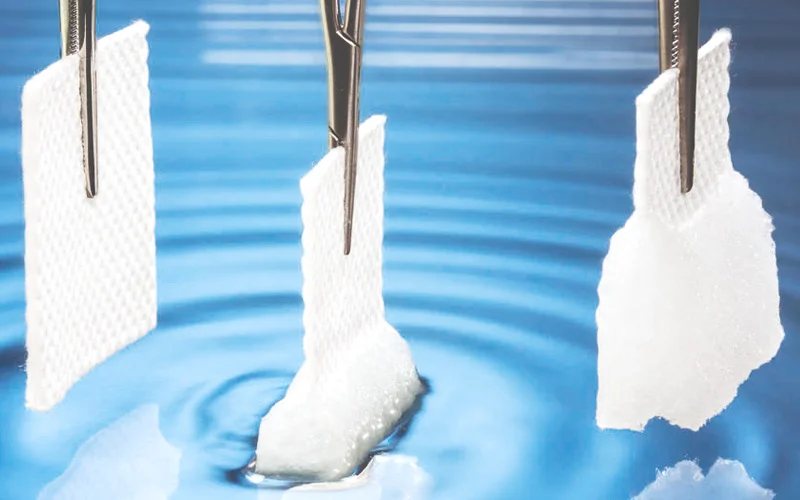
Cotton can absorb moisture effectively, making it ideal for towels, activewear, and other items that require good moisture management.
Durability
With proper care, cotton fabric can withstand wear and tear, maintaining its quality over time.
Hypoallergenic Properties
Cotton is less likely to cause allergic reactions, making it a safe choice for people with sensitive skin or allergies.
Benefits of 100% Cotton Fabric
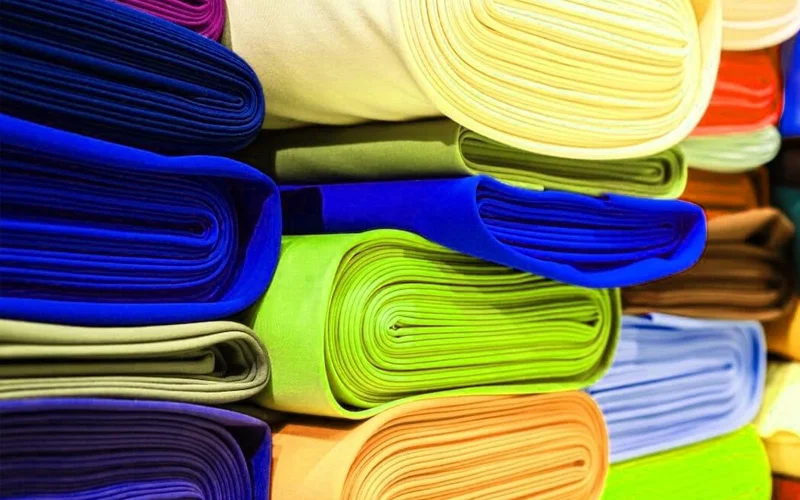
How to tell if fabric is 100 cotton is to better grasp its advantages and make it better used by people.
Comfort
The softness and breathability of cotton make it extremely comfortable to wear and use.
Moisture-Wicking
Cotton’s ability to absorb and wick away moisture helps keep you dry and comfortable.
Versatility
Cotton is used in a wide range of products, from clothing to home textiles, due to its versatility and durability.
Eco-Friendliness
Cotton is a renewable resource, and organic cotton is grown without harmful pesticides, reducing environmental impact.
Biodegradability
Being a natural fiber, cotton is biodegradable and decomposes more easily than synthetic fabrics, contributing to environmental sustainability.
How to Tell if Fabric is 100 Cotton: Common Tests
How to Tell if Fabric Is 100% Cotton With the Burn Test
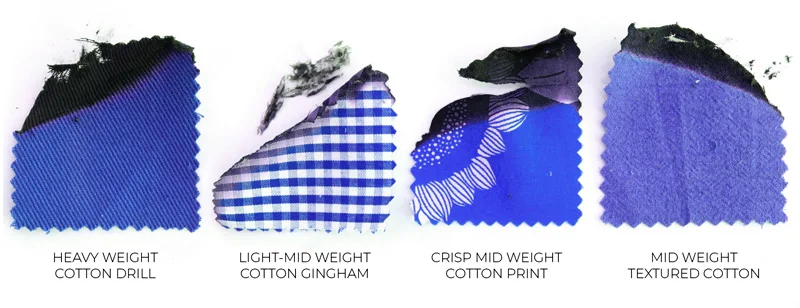
Procedure:
- Cut a small piece of fabric.
- Use tweezers to hold the fabric.
- Carefully burn the edge of the fabric with a lighter or match.
Results Interpretation:
- Cotton burns quickly with a yellow flame and smells like burning paper.
- The ash is fine and grayish.
Water Test

Procedure:
- Drop a small piece of fabric into a bowl of water.
- Observe how it behaves in water.
Results Interpretation:
- Cotton absorbs water quickly and sinks.
- Synthetic fabrics may float or take longer to absorb water.
Touch and Feel Test

How to Perform:
- Rub the fabric between your fingers.
What to Look For:
- Cotton feels soft and slightly fluffy.
- Synthetic fabrics may feel slick or plastic-like.
Visual Inspection
Weave Patterns
Examine the weave of the fabric. Cotton typically has a tighter weave compared to synthetic fabrics.
Labels and Tags
Check the garment’s label or tag for material information. It often states whether the fabric is 100% cotton.
Color and Dye Absorption
Cotton absorbs dyes well, resulting in vibrant colors. Check for even and rich color distribution.
Microscopic Analysis
Fiber Structure
Under a microscope, cotton fibers appear as twisted ribbons, distinguishing them from synthetic fibers.
Tools Required
- Microscope
- Sample of the fabric
Steps to Perform Analysis
- Place the fabric under the microscope.
- Observe the fiber structure for the characteristic twisted ribbon pattern.
Chemical Tests
Chemical Reactivity Test
Procedure:
- Apply a small amount of acetic acid (vinegar) to the fabric.
- Observe any reaction.
Results Interpretation:
- Cotton will not react with vinegar.
- Some synthetic fibers may show signs of degradation.
Solubility Test
Procedure:
- Place a fabric sample in acetone.
- Observe the fabric’s behavior.
Results Interpretation:
- Cotton will remain intact.
- Synthetic fibers like polyester may dissolve or deform.
Comparing Cotton with Other Fabrics
How to Tell if Fabric is 100 Cotton, to better identify, you can look at the differences between fabrics of other materials
| Comparison | Cotton | Polyester |
|---|---|---|
| Softness | Soft | Can feel less comfortable |
| Breathability | Breathable | Less breathable |
| Absorbency | Absorbent | Less absorbent |
| Durability | Durable, but less so than polyester | Highly durable |
| Comparison | Cotton | Rayon |
|---|---|---|
| Type of Fiber | Natural fiber | Semi-synthetic |
| Hypoallergenic | Hypoallergenic | Less hypoallergenic |
| Durability | Durable | Less durable |
| Comparison | Cotton | Linen |
|---|---|---|
| Softness | Soft | Crisp |
| Wrinkles | Less wrinkly | Wrinkles easily |
| Absorbency | Absorbent | Highly absorbent |
| Comparison | Cotton | Cotton Blends |
|---|---|---|
| Type of Fiber | Pure cotton | Mix of cotton and synthetic fibers |
| Properties | Natural properties of cotton | Combines properties of both cotton and synthetic fibers |
Importance of Knowing Fabric Composition
Health Reasons
Identifying 100% cotton is crucial for those with allergies or sensitive skin.
Environmental Impact
Choosing cotton, especially organic cotton, reduces environmental harm compared to synthetic fabrics.
Fabric Care and Maintenance
Proper identification helps in following appropriate care instructions to maintain fabric quality.
FAQs
Can 100% cotton fabric shrink?
Yes, cotton can shrink, especially when washed in hot water or dried on high heat. Pre-shrunk cotton minimizes this risk.
How to wash 100% cotton fabric?
Wash in cold or warm water with a gentle cycle and avoid high heat drying to prevent shrinking.
How to wash 100% cotton fabric?
Wash in cold or warm water with a gentle cycle and avoid high heat drying to prevent shrinking.
Is 100% cotton fabric suitable for all skin types?
Yes, its hypoallergenic properties make it suitable for most skin types, including sensitive skin.
How to differentiate between organic and regular cotton?
Organic cotton is grown without synthetic pesticides and fertilizers, often indicated by certification labels.
Conclusion
Identifying 100% cotton fabric is essential for ensuring comfort, durability, and suitability for sensitive skin. By understanding the various characteristics and testing methods, you can confidently select pure cotton fabrics for your needs. Remember, the right fabric choice can significantly impact your comfort and well-being.


